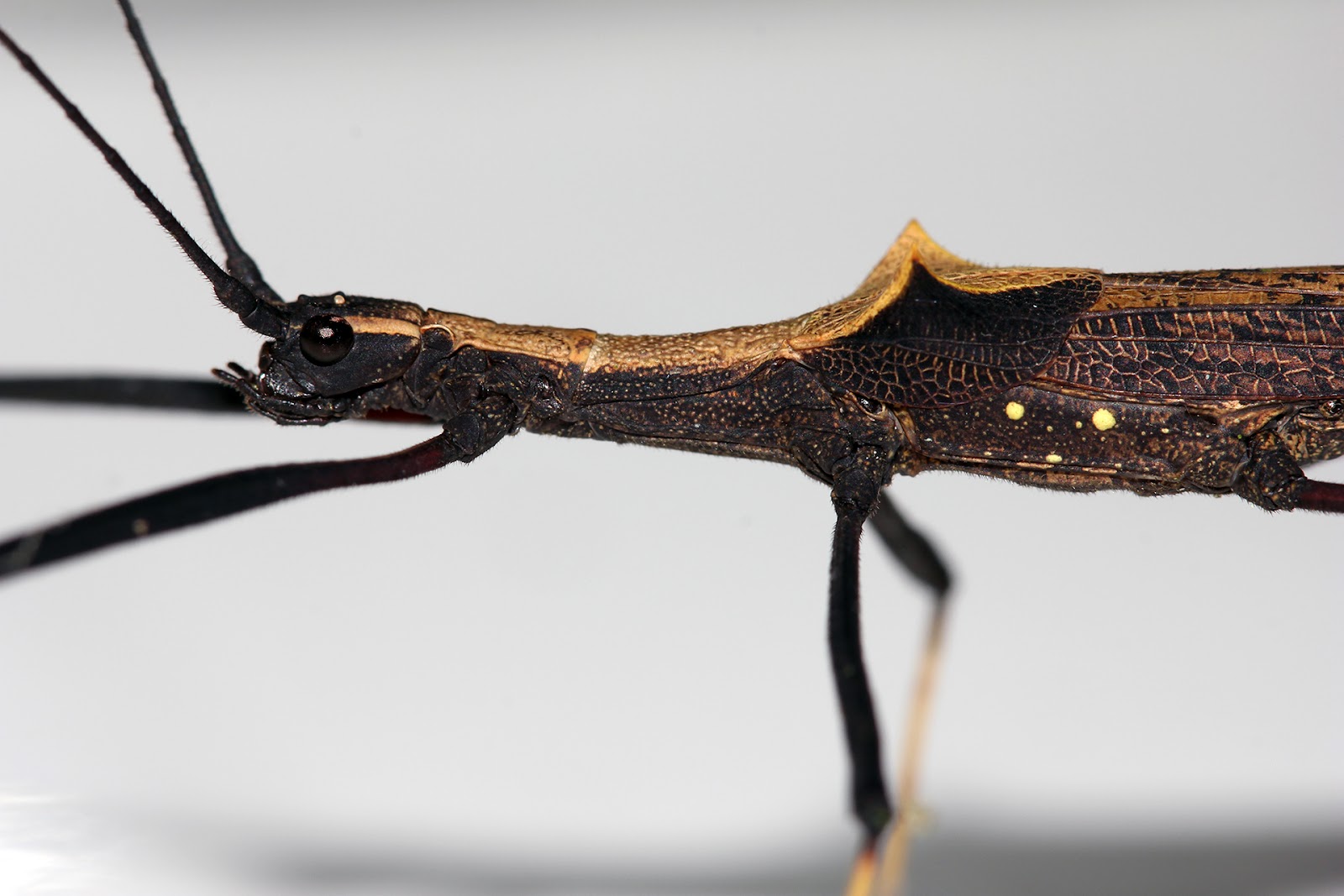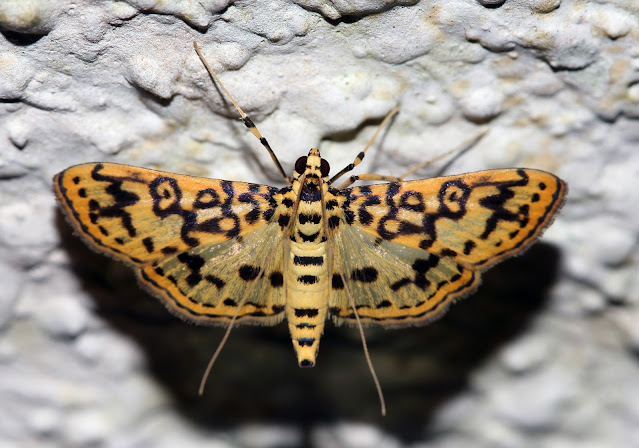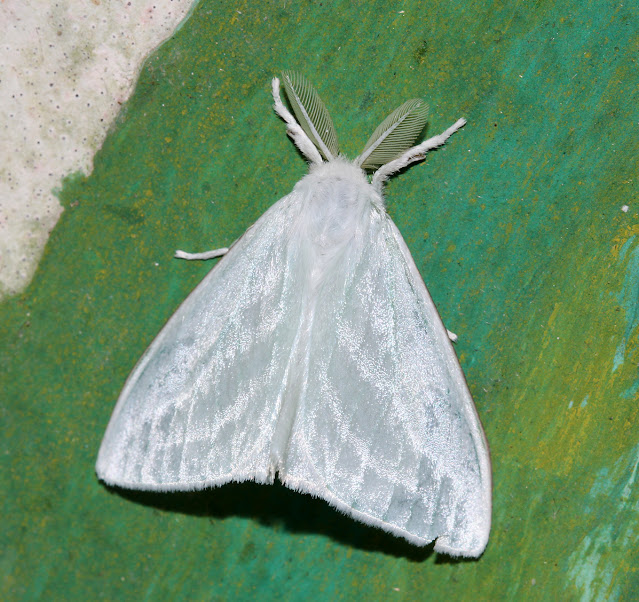Species diversity observed in a bathroom in Ecuador
About 10
years ago I was in a really cool place in Ecuador – the Jatun Sacha reserve
(which is part of the Jatun Sacha foundation).
Walking through the trails, I was simply amazed by the diversity of insects I observed,
but I didn’t even have to go to the trails, insects were literally everywhere:
the dorms, the kitchen, and even the bathrooms.
The
bathroom compound was an open space structure and luckily for me, it also had
lights I could turn on.
Just before
sunset, I’d turn on the lights, go and eat dinner for about 45 minutes, and
when I’d come back, I’d check the catch of the day (in other words, the
bathroom was a light trap).
The
surrealness of spending more than an hour each day taking photos of insects in
a bathroom was not lost on me, but I liked it!
Here are a
select few of the insects (mostly moths, also, one spider) I shot during that
time, most were identified via iNaturalist, and some I had help with (which I’ll mention).
Since I’m not usually identifying species from this area, identifications might
not be 100% accurate.
We start
with this funky looking Red-Spotted Sweetpotato Moth (Polygrammodes eleuata)
that can even be found in Florida. BTW, did you know that Florida is located
closer to Ecuador than it is to Oregon?
Not too
sure about the species or even genus of this moth, but I can tell you that it
belongs to the Subfamily Arctiinae. A pretty cool-looking moth.
Where there are insects, there are insect hunters. I saw a bunch of Cellar spiders (Family Pholcidae) on the ceiling, many with prey. I caught this specific one while it was molting.
Every time
I look at this photo I keep seeing an angry Samurai, I can’t unsee it!
It is from the genus Semyra (possibly Semyra irena).
Not only moths come to the light, but also this amazing stick insect - Pseudophasma bispinosum.
Another
insect hunter is this pretty small praying mantis - genus Pseudomiopteryx, it
didn’t want to miss the moth party.
Couldn’t get
a species or genus for this one as well, but I know it belongs to the Family Limacodidae.
A very fuzzy-looking slug Moth.
Staying in
the same family, this moth belongs to the genus Euclea (possibly Euclea
delphinii), really teddy bear-like.
*Update* u/Hazardous_Wastrel noticed that there's (what's probably) a drain fly next to the moth's leg.
u/atthevanishing mentioned that the slug moth actually looks like a tiny bison.
I tend to agree with both.
This moth
is one of my favorites, it’s from the genus Prepiella (probably Prepiella
aurea or Prepiella auroides), it’s really small (a bit less than 1cm),
and I think it looks like a mahjong tile.
A small and
colorful moth from the genus Pronola.
An Inchworm moth from the genus Leuciris.
Colla opalifera with very cool antennas.
It took me a really long time to identify this scorpion-like moth from the genus
Lineodes, they are quite strange looking.
This one looks
like the Red-Spotted Sweetpotato Moth, but it actually belongs to a different genus
altogether – it is Asturodes fimbriauralis. Cool pattern!
Another mesmerizing one. This moth was very hard to identify, but thanks to Reddit
(more specifically user u/Laconicus) I can say it’s most likely genus Undulambia
(or possibly another, very similar genus)
This velvety moth was also identified by u/Laconicus - Epia lunilinea
This weevil was a mystery. Gil Wizen jokingly identified it as a weevil-mimicking weevil. I couldn’t find any other weevil with such a head appendage so I turned to our local expert - Leybale Fridman from TAU, who checked it with another expert - Chris Lyal from the British Museum, who identified it as a weevil from the genus Leprosomus.
Funny enough, this genus did appear in iNaturalist when I looked for weevils from that area, but the first image belongs to a species that looks very different, if you click on it to see the rest of the photos, you would see something that resembles this weevil.
A vampire-looking moth from the genus Navarcostes.
Found this huge Lantern bug (Diareusa imitatrix) on the bathroom floor. It matched in size the biggest moths I saw there.
Speaking of big moths, this one was pretty (and) massive, it’s a White Saturniid Moth (Therinia transversaria)
Which type of mimicry didn’t we see yet? Oh right, wasp mimicry! So here’s a wasp-mimicking tiger moth - Cosmosoma stibosticta
And now for another extra fuzzy moth – the giant silkworm moth (Lonomia electra).
This moth blends really well amid the brown tree barks and foliage, not so much in this bathroom.
And here’s a closeup of its chest hair!
Another moth with nice feathery antennas, a male Caviria regina that doesn’t feed as an adult, as it belongs to the subfamily Lymantriinae.
A stink bug (Family Pentatomidae) that I found in the sink, belonging to the genus Edessa.
Ending with a really cool looking silkworm moth that’s giving me a 70s vibe - Anticla antica (identification by Reddit user u/rhymes_with_grug)
While
Ecuador is indeed up there with the topmost species-diverse countries, I hope
that the message is clear: insects can be found everywhere!

























